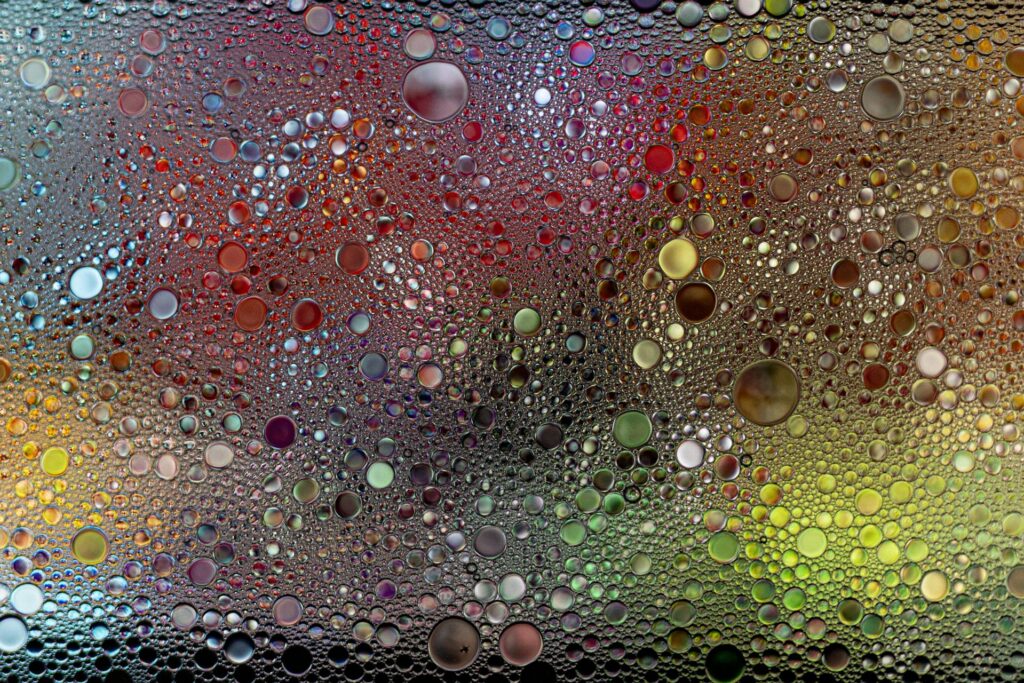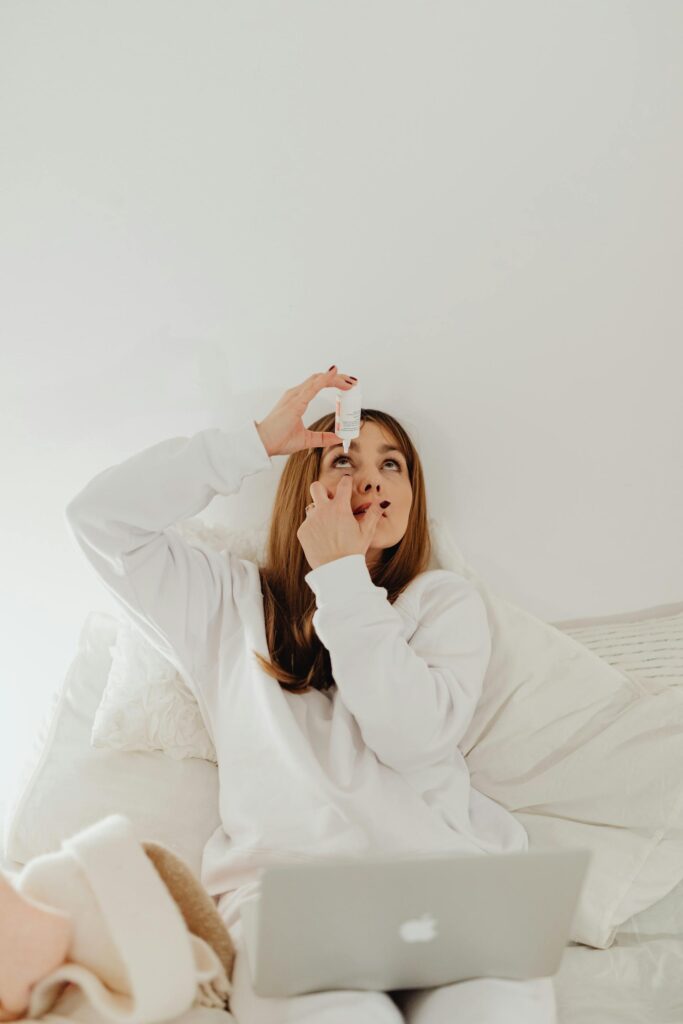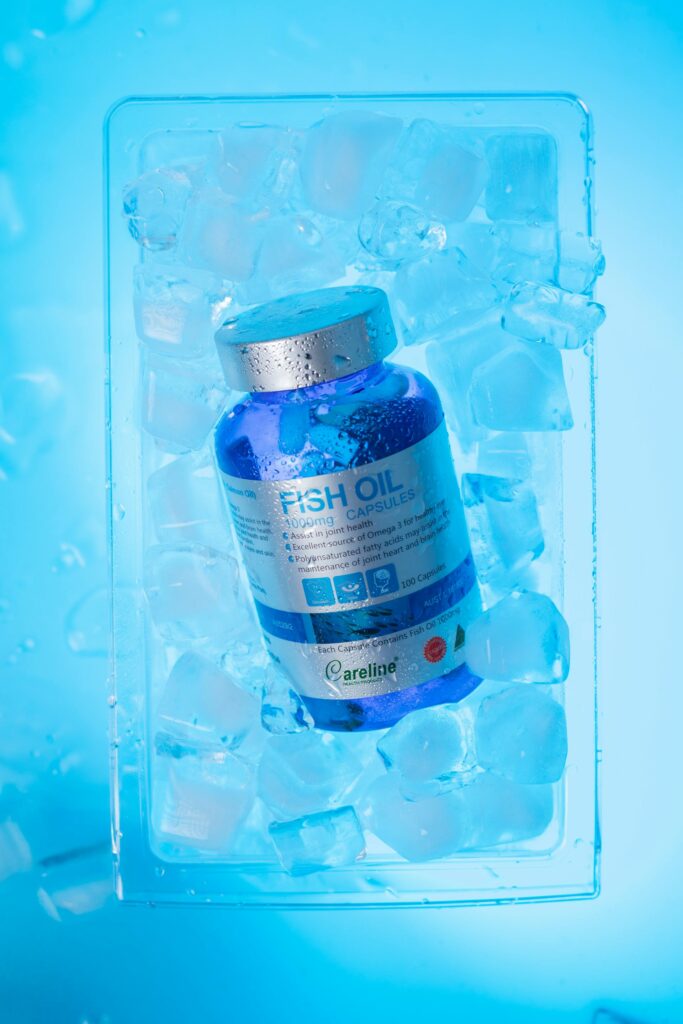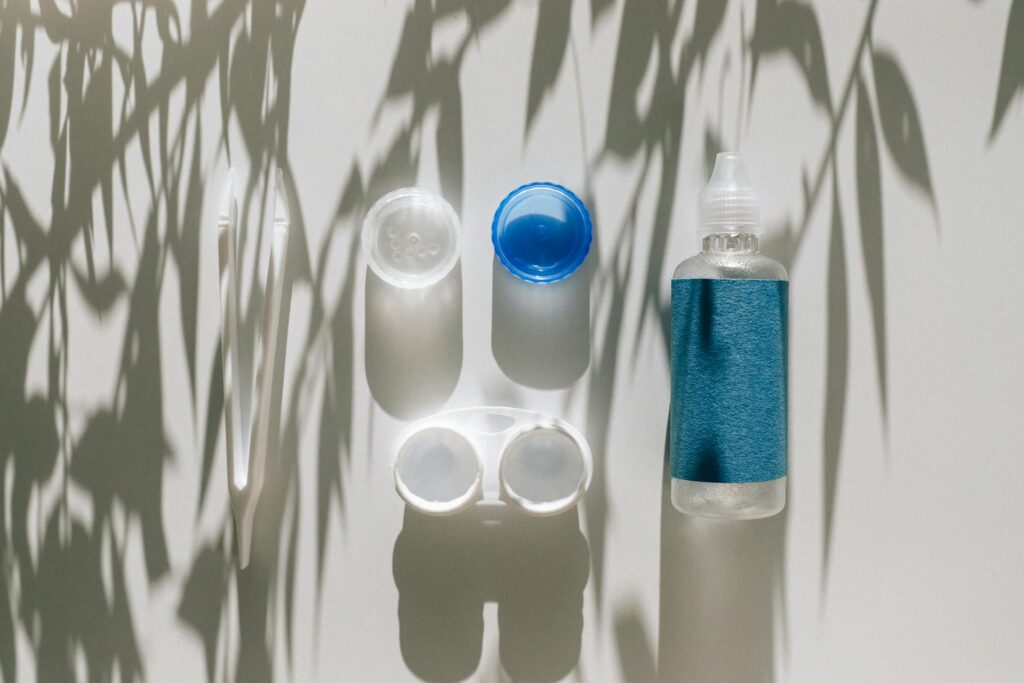
Dry Eye Syndrome: Causes, Symptoms, and Treatments in 2024
Welcome to the world of dry eye syndrome, where tears are in short supply and discomfort is the unwelcome guest that never leaves. Did you know that a whopping 16 million Americans are diagnosed with dry eye disease every year? That’s a lot of irritated eyeballs! Whether you’re staring at screens all day at work or battling the elements in the great outdoors, dry eye syndrome can turn your eyes into a desert wasteland. But don’t worry, the San Antonio Eye and Face Institute is here to help you navigate this ocular oasis. So grab your artificial tears (you’ll need ’em), and let’s dive into the world of dry eye syndrome. Trust us, by the end of our review, you’ll be seeing clearly – and comfortably!
Understanding Dry Eye Syndrome: What Is It?
Definition of Dry Eye Syndrome and Its Impact on Eye Health
Dry eye syndrome is a common condition that occurs when the eyes don’t produce enough tears or when the tears evaporate too quickly. This leads to insufficient lubrication and moisture on the eye’s surface. This can cause discomfort, redness, irritation, and a gritty sensation in the eyes. In some cases, the eyes’ tearing reflex can be activated and you could start to produce what seems like an never ending stream of tears.
Over time, dry eye syndrome can significantly impact your eye health by causing inflammation. Inflammation can damage the corneal surface and increase the risk of infections. Chronic dry eye can also affect vision quality, making tasks like reading, driving, or using screens more difficult. If left untreated, the condition can lead to long-term complications and reduced quality of life. This all makes a lot of sense, right? If not, then keep reading.
Explanation of the Tear Film and Its Components
The tear film is one of the most underappreciated, but most important parts of the eye. It is made up of three primary layers:
- Lipid (Oil) Layer
- Aqueous (Water) Layer
- Mucin (Mucus) Layer
The outer layer is the lipid layer and it is produced by the meibomian glands. It prevents evaporation of the tear film and ensures smooth eyelid movement. The middle aqueous layer, which is the thickest layer, is secreted by the lacrimal glands and provides essential hydration, nourishment, and protection for the eye. The innermost mucin layer, produced by goblet cells, helps the tear film disperse evenly across the corneal surface. This ensures that moisture is distributed evenly. When any of these 3 layers are disrupted, it can result in dry eye syndrome and other eye surface issues.

Overview of the Prevalence and Demographics Affected
Dry eye syndrome affects millions of people worldwide. Its prevalence increases with age. It is particularly common in individuals over the age of 50. In this population, tear production decreases. Women are disproportionately affected due to the hormonal changes of menopause.
Additionally, contact lens wearers, those who use computers a lot during the day, or those that live in dry or windy climates are at a higher risk. Certain medical conditions, such as autoimmune diseases like Sjögren’s syndrome, diabetes, and thyroid disorders, can contribute to dry eye. Amongst different ethnic groups, the condition is widespread. Research studies suggest that certain demographic groups, such as Asians and Hispanics, may experience a higher risk of developing dry eye syndrome.
What Are The Differences Between Dry Eye And Other Eye Conditions Like Conjunctivitis Or Allergies?
Dry eye is a chronic condition caused by insufficient tear production or poor tear quality. Unlike conjunctivitis (pink eye) or eye allergies, dry eye symptoms include dryness, grittiness, and burning sensation rather than redness or itching often associated with the latter conditions.
Common Causes of Dry Eye Syndrome
Age-Related Factors and Hormonal Changes
As people age, the likelihood of developing dry eye syndrome increases significantly. Tear production naturally decreases over time, which can lead to insufficient moisture on the eyes. Age-related changes in the meibomian glands, which produce the oil layer of the tear film, also contribute to faster evaporation of tears. In women, hormonal changes during menopause can play a significant role in the development of dry eye. The decrease in estrogen and androgens causes the glands responsible for tear production, the lacrimal gland, to reduced tear volume and quality. Hormone replacement therapy (HRT) can also impact dry eye. Studies show that estrogen-only HRT may increase the risk of developing dry eye syndrome.
Environmental Influences
Environmental factors can worsen dry eye symptoms. People are more prone to suffering from dry eye In climates with low humidity or in settings with constant exposure to air conditioning or heating. Air conditioning and heating systems reduce moisture in the air which accelerates tear evaporation. This leaves the eyes feeling dry and irritated.
Low humidity environments similarly contribute to rapid evaporation of the tear film. Additionally, prolonged exposure to wind, dust, or smoke can trigger or worsen dry eye symptoms. This is a common issue in San Antonio. Individuals who use computers or other digital devices for many hours during the day are susceptible. The blink rate, the number of times one blinks per minute, tends to decrease, further contributing to tear evaporation.
Finally, another large contributor, especially in San Antonio, is the use of ceiling fans or any type of fan. Those who sleep with a fan running tend to deal with chronic dryness, especially in the morning when first awakening. The eyelid skin is the thinnest skin in the body and the tear film can evaporate directly through the eyelids when sleeping. In these cases, adding a sleeping mask at night can be beneficial for those who cannot exist without their ceiling fan.

Medical Conditions Associated with Dry Dye
Several medical conditions are closely associated with dry eye syndrome. Rheumatoid arthritis is probably the #1 cause of dryness that we see in the clinic. Other autoimmune disorders like Sjögren’s syndrome, which targets the glands responsible for moisture production, is a leading cause of severe dry eye. Lupus and thyroid disorders can also disrupt the normal function of tear glands. This all leads to reduced tear production or tear quality.
San Antonio has a high rate of individuals with diabetes. We don’t always think about it, but diabetes is linked to dry eye. It can damage the nerves responsible for tear secretion. Additionally, acne rosacea, a dermatological condition, can affect the functioning of the Meibomian glands. This impairs the production of the oil layer of the tear film and contributes to evaporative dry eye symptoms.
Medications That Can Contribute to Dry Eye Symptoms
Various medications can contribute to or worsen dry eye symptoms by reducing tear production or altering the composition of the three layers of the tear film. Common culprits include:
- Antihistamines – used to treat allergies
- Decongestants – can dry out mucous membranes, including the eyes
- Antidepressants – particularly selective serotonin reuptake inhibitors (SSRIs)
- Anxiety medications – linked to dry eye
- Hypertension medications – beta-blockers and diuretics have been linked to dry eye
- Hormone Therapy – oral contraceptives or hormone replacement therapy can impact tear production
Individuals taking these medications should be aware of the potential side effects on eye health. They should consider consulting their eye doctor if they experience symptoms of dry eye.
Recognizing The Symptoms of Dry Eye
Detailed Description of Dry Eye Symptoms
Dry eye syndrome often presents with a range of uncomfortable and irritating symptoms that can vary in severity from person to person. A frequent complaint is a persistent burning or stinging sensation in the eyes. This can make daily activities like reading or using a computer difficult. Many individuals also experience eye redness. This is due to the surface of the eye becoming inflamed due to the lack of proper lubrication. Blurred vision is another common symptom. This typically occurs after prolonged visual tasks or towards the end of the day. This is a result of the tear film being insufficient to maintain a smooth optical surface on the eye. Vision fluctuates which causes frustration and difficulties with concentration. Vision loss in dry eye is usually not permanent.
Less Obvious Signs of Dry Eye Syndrome
Some symptoms of dry eye syndrome are obvious. Whereas, others can manifest in less recognizable ways that may go unnoticed initially. For example, some individuals with dry eye experience excessive tearing. We frequently hear, “My eyes are tearing all the time. How can they be dry?”
As the eyes become more severely dry, the cornea sends a signal to the lacrimal gland saying, “I’m dry!” The result is a surge of tears being released all at once. This can cause watery eyes. It is called reflex tearing. This surge of tears is composed of the water component of the tears. It lacks the necessary oil and mucous layers to keep the tear film stabilized. It soon evaporates and the cycle starts all over again.
Another subtle symptom is the feeling of having something gritty or sandy in the eyes. We refer to this as a foreign body sensation. It literally feels as if you have a foreign body in your eye. Finally, light sensitivity, or photophobia, is a less commonly recognized symptom of dry eye. Instability of the tear film causes the surface of the eye to become rough. When light hits the surface of the eye, the rays are sent in multiple directions. This is the definition of glare. It can make sunlight or bright lights uncomfortable to bear. That is why people with dry eyes frequently feel they need to wear sunglasses, sometimes indoors.
Impact of Symptoms on Daily Life and Quality of Vision
The symptoms of dry eye syndrome can have a significant impact on daily life and the overall quality of vision. People with dry eye often find it difficult to perform tasks that require prolonged visual focus. Tasks such as reading, driving, or working on a computer become difficult. As the symptoms worsen over time, blurred vision can make it hard to maintain sharp focus.
Dry eye sufferers may experience reduced productivity and frustration in both personal and professional activities. The constant discomfort caused by burning, redness, or foreign body sensation can also lead to emotional and physical fatigue. Moreover, in severe cases, dry eye can limit social interactions or one’s desire to participate in outdoor activities. Exposure to wind or bright light can aggravate symptoms leading to an overall reduced quality of life.

Diagnosing Dry Eye: Tests and Procedures
Overview of Eye Examination for Dry Eye Syndrome
During the eye exam, our doctors will ask about your symptoms, lifestyle, and review your medical history. This can help identify factors contributing to dry eye. Just be forewarned, simple aging is one of the leading contributors to dry eye. The doctor will examine the eyes with a slit lamp to assess the condition of the cornea and conjunctiva looking for signs of inflammation. Fluorescein, a yellow dye, or other specialized dyes may be used to highlight areas of dryness or irregularities on the surface of the eye. In addition to assessing tear production and quality, the doctor will evaluate the eyelids and the meibomian glands. Dysfunction in these glands is a common cause of dry eye.
Explanation of Tear Film Tests
To measure tear production and tear film stability, several diagnostic tests are available. The tear breakup time (TBUT), which measures how quickly the tear film breaks up after a blink. Fluorescein, the yellow stuff, if one of a couple of special dyes that is applied to the eye. The doctor will examine the appearance of your eye after you blink. You may be asked to hold your blink for a few seconds. The time until dry spots appear on the cornea is examined. A short TBUT indicates a low amount of tears or instability of the tear film, which can contribute to dry eye symptoms.
Another test is the Schirmer test. With this test, a small strip of filter paper is placed inside the lower eyelid to measure tear production over a set period. A low amount of moisture on the paper indicates insufficient tear production. False negatives are common are reflex tearing can make it appear that tear production is normal.
Advanced Diagnostic Techniques
Excessive testing to diagnose dry eye is often unnecessary. It can easily be seen on examination. The additional cost of testing can in most cases be avoided. These tests frequently create extra out-of-pocket costs for patients. Considering the fact that many treatments for dry eye are out-of-pocket expenses, our philosophy is that out-of-pocket costs are better spent on remedies to the problem. We’ll still delve into advanced diagnostic testing for academic purposes.
In more advanced cases of dry eye syndrome, specialized diagnostic techniques can be used to gain a deeper understanding of the condition. Corneal topography, for example, creates a detailed map of the corneal surface. This helps detect irregularities caused by chronic dryness or other factors that affect vision quality.
Meibography is another advanced diagnostic tool used to assess the health of the meibomian glands. It allows for imaging of the meibomian glands, which are responsible for producing the oily layer of the tear film. By imaging the meibomian glands, eye care professionals can identify blockages, atrophy, or dysfunction. These advanced diagnostics may allow for more targeted and personalized treatment plans. However, a similar plan could be formed without the additional tests.
Treatment Options: From Simple To Advanced
Over-the-Counter Artificial Tears and Lubricants
For individuals experiencing mild to moderate dry eye symptoms, over-the-counter artificial tears and lubricants are often the first line of treatment. These products are designed to supplement the natural tear film and provide temporary relief from dryness, irritation, and discomfort. There are various types of artificial tears available, including preservative-free formulations for those with sensitive eyes or severe dry eye. The great benefit of preservative-free tears is that you can use them every one hour if needed. Tears with preservatives should not be used more than four times per day.
Lubricating gels and ointments, which are thicker and longer-lasting, can also be used. They are particularly useful at night to provide extended moisture and protection for the surface of the eye. These solutions are easy to use and can be purchased over-the-counter without a prescription. However, the downside is that they need to be applied frequently based on the severity of symptoms.

Prescription Medications
For patients with chronic or more severe dry eye, over-the-counter solutions may not be sufficient. In these cases, prescription medications like cyclosporine (Restasis) or lifitegrast (Xiidra) may be recommended. Cyclosporine is an immunomodulatory drug that helps reduce inflammation in the tear-producing glands, the lacrimal gland. This increases tear production over time. The downsides are that the drops burn until your eye’s moisture level improves and it can take several weeks for the drops to improve you dry eye.
Lifitegrast, on the other hand, is a lymphocyte function-associated antigen-1 (LFA-1) antagonist that blocks inflammatory pathways associated with dry eye disease. Again, some patient’s complain of burning, a strange aftertaste 15-20 minutes after using the drop, and it can also take several weeks of consistent use for the benefits to be fully appreciated.
Both medications address the underlying inflammation often present in chronic dry eye. These prescription treatments are particularly effective for patients with underlying inflammatory causes of dry eye, such as rheumatoid arthritis or Sjogren’s syndrome.
Finally, perfluorohexyloctane (Meibo) is a new dry eye drop specifically designed to target meibomian gland dysfunction (MGD). This innovative treatment helps improve the quality and stability of the tear film by addressing the underlying oil layer deficiency caused by malfunctioning meibomian glands. By restoring balance to the tear film, Meibo can reduce symptoms like dryness, irritation, and blurry vision. It’s the the newest option in prescription dry eye medications. It provides a promising solution for patients suffering from meibomian gland dysfunction-associated dry eye.
In-Office Procedures
In-office procedures recommended when other treatments do not provide adequate relief. Punctal plugs are small devices inserted into the tear ducts to block tear drainage off the surface of the eye (punctal occlusion). This allows tears to stay on the eye’s surface longer which helps with dryness. This procedure is simple, minimally invasive, performed in the office, and can be temporary (collagen plugs) or permanent (silicon plugs). Silicon plugs are great if they stay in place. The problem with them is that they frequently pop out. Collagen plugs are a great alternative. They are placed deeper in the tear duct system and rarely pop out. They are designed to melt away over time. Some of the longer lasting collagen plugs can last up to 6 months.
Another advanced treatment is intense pulsed light (IPL) therapy. It’s useful for those with meibomian gland dysfunction. IPL uses light pulses to reduce inflammation and improve meibomian gland function. This improves the quality of the tear film. In particular, those with underlying acne rosacea usually see a huge benefit from IPL therapy.
Punctal plugs and IPL are useful in more persistent or severe cases of dry eye and can complement other treatments for a more comprehensive approach.
Lifestyle Changes and Home Remedies
Managing dry eye syndrome often involves lifestyle changes and home remedies to improve symptoms and prevent flare-ups. Humidifiers, taking breaks from screens, and wearing sunglasses in windy environments can reduce environmental triggers. Staying hydrated by intaking adequate amounts of water and incorporating omega-3 fatty acids into the diet may also support tear production.
Warm compresses and eyelid scrubs, especially with tea tree oil eyelid cleansers, can help relieve symptoms associated with meibomian gland dysfunction. Avoiding smoking or exposure to smoke can also be useful. These strategies, when combined with other treatments, can significantly improve dry eye symptoms and support overall eye health.
The Role Of Nutrition In Managing Dry Eye
Importance of Omega-3 Fatty Acids and Other Nutrients
Omega-3 fatty acids play an important role in managing dry eye syndrome due to their anti-inflammatory properties. They are found in foods like fatty fish (salmon, mackerel), flaxseeds, chia seeds, and walnuts. Omega-3s help improve the quality of the tear film by supporting the function of the meibomian glands. The meibomian glands produce the oil layer of tears which is essential in preventing rapid tear evaporation.
Clinical studies have shown that regular intake of omega-3 supplements can reduce symptoms like irritation, burning, and redness from dry eye.
Hydration and Its Impact on Tear Production
Staying well-hydrated is vital for maintaining healthy tear production. Water is the main component of the aqueous layer of the tear film. The aqueous layer is the thickest layer of the tear film and provides moisture to the surface of the eye. Dehydration can lead to insufficient tear production which causes dryness, irritation, and blurry vision.
Drinking adequate amounts of water throughout the day can help maintain proper tear volume and quality. In addition to water, consuming hydrating foods such as cucumbers, watermelon, and oranges can further support tear production. They can support better eye health and reduced dry eye symptoms.
Dietary Supplements for Eye Health
For individuals who struggle to obtain sufficient nutrients through diet alone, dietary supplements can be a valuable tool in managing dry eye syndrome. Choose a high-quality omega-3 fatty acid supplement to help reduce inflammation and support tear quality. Fish oil capsules or flaxseed and chia seeds can offer additional support for those with meibomian gland dysfunction. It’s best to consult with an eye care professional doctor before starting any supplement regimen to ensure that the right dosage and combination of nutrients are chosen for optimal results.

Technology And Dry Eye: A Double-Edged Sword
Impact of Digital Device Use on Dry Eye Symptoms
Prolonged use of digital devices such as computers, smartphones, and tablets has been linked to an increase in dry eye symptoms. When we stare at screens for extended periods, our blink rate decreases. The blink rate is simply the number of times we blink per minute. A reduced blink rate reduces the amount of moisture distributed across the surface of the eye. It also allows the tear film to evaporate more rapidly.
This can lead to symptoms such as dryness, irritation, burning, and blurred vision. This combination of symptoms is sometimes referred to as digital eye strain or computer vision syndrome. Blue light emitted by screens has been implicated in eye fatigue and discomfort, but the reality is that the amount of blue light emitted by digital devices is small compared to the blue light we receive from the sun. For that reason, it’s questionable whether blue light blocking glasses truly help with dry eye symptoms.
Protective Measures for Screen Users
To alleviate eyestrain caused by digital devices, one simple and effective measure is the 20-20-20 rule. This rule recommends that for every 20 minutes spent looking at a screen, you should take a 20-second break and look at something 20 feet away. This habit helps the eyes refocus, reduces eye fatigue, and promotes blinking. This spreads moisture across the eye’s surface and gives them a much needed break so that they aren’t sore and painful by the end of the day.
Additionally, using proper lighting, reducing screen glare, and positioning screens at eye level can also help minimize eyestrain. Making an intentional effort to blink often, using humidifier where you work, and using artificial tears or lubricating eye drops while using digital devices can provide further relief from dry eye symptoms.
Emerging Technologies for Dry Eye Management
Innovations in eye care technology are providing new and improved options for managing dry eye symptoms. Devices like specialized heat masks and warm compresses are designed to soften the oil in the meibomian glands. This improves the quality of the tear film’s oil layer and prevents rapid tear evaporation.
We mentioned intense pulsed light (IPL) earlier, but will mention it again. IPL therapy has shown promise in treating dry eye through its thermal effect on oil in the glands and by constricting small blood vessels that carry inflammatory molecules to the lids.
Special Considerations: Dry Eye And Contact Lenses
Challenges of Wearing Contacts with Dry Eye Syndrome
Wearing contact lenses can be challenging for individuals with dry eye syndrome. Contacts reduce the amount of oxygen reaching the cornea and can exacerbate symptoms like dryness, irritation, and discomfort. Additionally, contact lenses may interfere with the natural tear film, leading to faster evaporation and contributing to a feeling of dryness or grittiness. These symptoms can make it difficult to wear contact lenses for extended periods of time. This is called contact lens intolerance. As a result, it may become necessary to limit contact lens wear or rely on other forms of vision correction.
Specialized Contact Lenses for Dry Eye Sufferers
Fortunately, contact lens technology continues to advance. There are contact lenses for individuals with dry eye syndrome. For example, scleral lenses rest on the sclera (the white part of the eye) and create a small reservoir of fluid between the lens and the cornea. This provides constant hydration to the eye.
Another option is soft contact lenses with a high oxygen permeability. These highly breathable materials include silicone hydrogel, which allow more oxygen to reach the cornea and reduce the risk of dryness. Finally, some lenses are coated with moisture-retaining agents to maintain proper hydration throughout the day.
These specialized lenses can significantly improve contact lens comfort and extend the amount of time the lenses can be worn for dry eye sufferers.
Best Practices for Contact Lens Hygiene and Wear
Proper hygiene and care are crucial for anyone wearing contact lenses, but it’s especially important for individuals with dry eye syndrome. Always wash and dry your hands thoroughly before handling contact lenses to avoid introducing bacteria or irritants into the eyes. Using a high-quality cleaning solution, disinfecting your lenses daily and replacing the solution in the storage case after each use is critically important.
Avoid wearing your contacts for longer than the prescribed duration. Give your eyes a break by alternating between contact lenses and glasses when possible. Additionally, using preservative-free lubricating eye drops or artificial tears can help keep the eyes moisturized while wearing lenses. Daily contact lenses may cost more over time, but using a new contact lens each time can sometimes be of benefit for those with dry eyes.

The Future Of Dry Eye Treatment
Emerging Therapies and Research Developments
Dry eye treatment is an area of active research. New therapies and approaches are being developed to address the underlying causes and improve patient outcomes. One emerging therapy involves biologic eye drops derived from a patients’ blood. The plasma component of the blood is separated and used to create an eye drop. These drops are called autologous serum eye drops and have shown promise in promoting healing of the ocular surface.
Amniotic membrane therapy is an advanced treatment option for severe cases of dry eye. They are particularly useful when the condition is associated with corneal damage or persistent inflammation. The amniotic membrane, derived from the innermost layer of the placenta, contains natural anti-inflammatory and healing properties. When applied to the surface of the eye, it can promote tissue regeneration, reduce inflammation, and help restore the health of the cornea. This treatment is being used in combination with bandage contact lenses for patients with chronic or severe dry eye that have not responded to conventional therapies. Doctors at the San Antonio Eye and Face Institute have been very impressed by the results seen from amniotic membrane.
Finally, novel anti-inflammatory medications, such as reproxalap, are being tested to reduce inflammation in dry eye patients. Neurostimulation devices that cause an increase in natural tear production by stimulating the first division of the trigeminal nerve in the nose is available, as is a nasal spray that also stimulates the trigeminal nerve.
Personalized Medicine Approaches to Dry Eye
As with many other fields of medicine, dry eye management is moving toward more personalized treatment strategies tailored to the individual’s specific symptoms, causes, and lifestyle. This allows for customized treatment plans that may include a combination of medications, in-office procedures, and lifestyle changes. Personalized medicine offers the potential for more targeted, effective treatments and improved outcomes compared to generalized approaches, particularly for those with complex or severe cases of dry eye syndrome.
Potential for Regenerative Medicine in Treating Dry Eye
Regenerative medicine holds exciting potential for the future of dry eye treatment, particularly in cases where damage to the ocular surface or tear-producing glands has occurred. Stem cell therapy is one area being explored to regenerate damaged tissues in the eye. Additionally, researchers are investigating the use of bioengineered tissues or growth factors to promote healing and restore normal tear function. While still in the early stages of research, these regenerative therapies offer hope for more permanent solutions to dry eye syndrome by addressing the root cause of the condition and repairing the damaged ocular surface.
When To Seek Professional Help
Red Flags that Indicate the Need for Medical Attention
While occasional dry eye symptoms can often be managed with over-the-counter remedies, there are specific red flags that signal the need for professional medical attention. Persistent or severe symptoms such as intense burning, sharp or stabbing pain, or significant vision disturbances warrant a thorough evaluation.
Additionally, if dry eye symptoms are accompanied by frequent eye infections, significant redness, or the development of new symptoms like light sensitivity or excessive tearing, it is important to seek medical advice. These symptoms may indicate more severe underlying conditions or complications that require specialized treatment to prevent further damage to the eyes and preserve vision.
Choosing the Right Eye Care Professional
Selecting the appropriate eye care professional is essential for effective management and treatment of dry eye syndrome. Ophthalmologists are well-equipped to diagnose and manage complex cases of dry eye. Optometrists with a focus on dry eye management can also provide care and treatment options for less severe cases. When choosing a professional, consider their experience and expertise in treating dry eye, as well as their approach to personalized care. It is beneficial to choose someone who offers a range of treatment options, including both medical and lifestyle interventions.
Preparing for Your Dry Eye Consultation
Proper preparation for a dry eye consultation can help ensure a productive visit and accurate diagnosis. Before your appointment, make a list of your symptoms (this doesn’t have to be written, even a mental list is useful), including their frequency, duration, and any factors that exacerbate or alleviate them. Bring a list of your medications, including over-the-counter, prescription medications, and nutritional supplements you are currently using.
Details about your lifestyle, work environment, and environmental factors you encounter are useful to mention. It is also helpful to share your medical history, especially previous eye conditions or autoimmune disorders. Being prepared with this information will help your eye care professional to conduct a thorough evaluation and develop a tailored treatment plan for your dry eye syndrome.
Conclusion
Well, folks, we’ve taken quite the journey through the arid landscape of dry eye syndrome! From understanding those pesky symptoms to exploring cutting-edge treatments, we’ve covered it all. Remember, dry eye isn’t just a minor annoyance – it’s a condition that deserves attention and care. Whether you’re reaching for those artificial tears or considering more advanced treatments, the key is to take action. Your eyes work hard for you every day, so why not show them some love? Don’t let dry eye syndrome dim your sparkle or your vision. Take the first step towards relief today – your future self (with bright, comfortable eyes) will thank you!
Frequently Asked Questions
What’s the #1 Environmental Factor for Dry Eye in San Antonio?
In San Antonio, the weather is frequently hot. Ceiling fan use is very common as a way to keep cool and reduce energy costs. The circulating air from ceiling fans cause the tear film to evaporate quickly leading to dry eye symptoms. If your read or watch TV under a ceiling fan, this can exacerbate the problem. This occurs because the number of times you blink per minute (the blink rate) decreases when reading or watching TV. The combination of a reduced blink rate and ceiling fan use can quickly lead to severe symptoms of dry eye. For that reason, ceiling fans are the #1 environment risk factor for dry eye syndrome in San Antonio!
How Does Aging Affect Dye Eye?
Most people will experience dry eye symptoms as they age. It’s just a part of your eyes getting older. The lacrimal glands (which produce the water part of the tear film) and the meibomian glands (which produce the oil part of the tear film) simply don’t work as well over time. Inflammation in the body can increase as we age. In addition to aging, inflammation can affect the lacrimal glands and decrease production of the water part of the tear film.
Other health conditions like diabetes, thyroid disease, and rheumatoid arthritis become more common as we age. The diseases themselves and the medicines used to treat them can cause dry eye. Finally, the eyelids can lose collagen and elastin with age. This can cause them to droop and sag. When the lower eyelids droop, they can flop away from the eye (a condition called ectropion) causing tears to run off the eye and down the cheek.
In summary, dry eye syndrome is more common as we age, but you don’t need to suffer. Call us today for an evaluation and treatment options.
How Does Gender Affect Dry Eye?
Changes in hormone levels can affect dry eye. During pregnancy, hormone levels change and can cause dry eye. After pregnancy, hormone levels may change again and symptoms may improve. The use of birth control pills can also alter hormone levels leading to dry eye. After menopause, whether it occurs naturally with age or as a consequence of surgery, hormone levels change. Mucus membranes become drier. Because the eye is coated with a mucus membrane, they can become dry.
What Environmental Factors Affect Dry Eye?
As mentioned above, the use of ceiling fans is an underappreciated contributor to dry eye. If you’re around smoke, wind, dust, or dry conditions, you may also develop dry eye. Your home environment can usually be tightly controlled and regulated, but your work environment may be more difficult to alter. If you work in a bar, you may be exposed to secondhand cigarette smoke, a lifeguard may deal with windy, dusty conditions, and construction worker may work in a dry, hot environments. Any of these scenarios can lead to symptoms of dry eye.
Moreover, many jobs now require the use or computer screens or other digital devices. The device and its blue light emitting screens does not directly cause dry eye. However, your blink rate (the number of times you blink per minute) goes down when you stare at a screen and this can cause all the symptoms of dry eye.
Does LASIK Surgery Cause Dry Eye?
Yes, it does? When LASIK surgery if performed, a flap is cut on the surface of the eye (the cornea). The cornea has a lot of small nerves that provide feedback to the lacrimal gland letting the gland know when the surface of the eye is dry. When these nerves are cut during LASIK surgery, they do not regenerate. The natural feedback loop used to keep the eyes moist is disrupted.
Immediately after LASIK surgery, the eyes are usually very dry for this reason. Over time, symptoms typically improve. However, some people continue to suffer from chronic dry eye symptoms. Having pre-existing dry eye is sometimes considered a reason to not undergo LASIK surgery. Although rare, there have been some cases of individuals committing suicide due to severe dry eye symptoms after LASIK surgery and this has captured the attention of the FDA.
Watch A Video About Dry Eye
